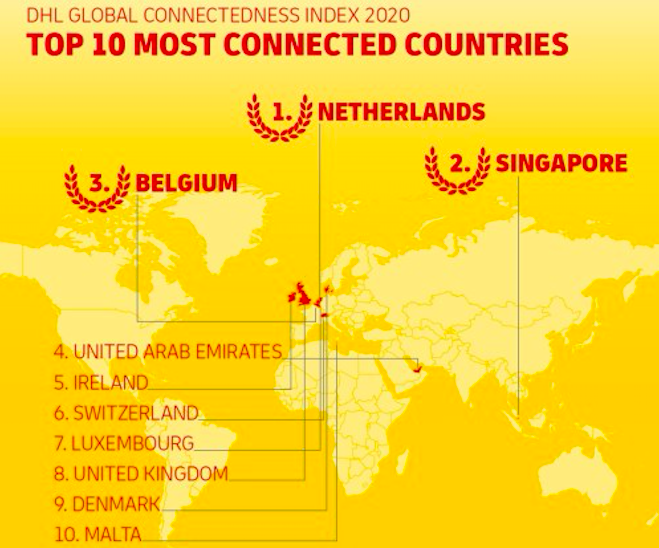The pandemic is unlikely to send the world’s overall level of connectedness below where it stood during the 2008-2009 global financial crisis as trade and capital flows have already started to recover, the DHL Global Connectedness Index 2020 reveals.
Released by DHL and the NYU Stern School of Business, the report also shows that international data flows surged during the spreading pandemic as in-person contact migrated online, boosting international internet traffic, phone calls and e-commerce.
“The current crisis has shown how indispensable international connections are for maintaining the global economy, securing people’s livelihoods and helping companies strengthen their trading levels,” says John Pearson, CEO of DHL Express.
“Connected supply chains and logistics networks play an essential role in keeping the world running and stabilising globalisation especially at a time of a crisis that spans our globe,” said Pearson. “The recent vaccine breakthrough has put a spotlight on the systemic importance of fast and secure medical logistics dependent on a worldwide interconnected network that effectively ensures international distribution.”
Steven A. Altman, lead author of the report and director of the DHL Initiative on Globalisation at the NYU Stern School of Business, said globalisation did not collapse in 2020, but that the pandemic did transform — at least temporarily — how countries connect.
“Stronger global connectedness could accelerate the world’s recovery from the COVID-19 pandemic, as countries that connect more to international flows tend to enjoy faster economic growth,” said Altman.
The index uses more than 3.5 million data points to track the globalisation of 169 countries over the period from 2001 to 2019. It measures each country’s global connectedness based both on the size of its international flows relative to the size of its domestic economy (“depth”) and the extent to which its international flows are distributed globally or more narrowly focused (“breadth”).
This year, six Asia-Pacific economies ranked among index’s top 30, with Singapore leading at the second spot overall. The other five are Malaysia (16th), Taiwan, China (19th), South Korea (22nd), Hong Kong SAR (25th), and Thailand (30th).
Singapore took the top spot on the depth scale, which measures international flow relative to domestic activity, followed by Hong Kong at a close second.
On the breadth dimension, Asia-Pacific countries also scored well, with South Korea and Japan coming in at fifth and sixth respectively.
Also, the report finds that Southeast Asian countries benefitted from linkages with wider Asian supply chain networks as well as ASEAN policy initiatives promoting regional economic integration.
Ken Lee, CEO of DHL Express Asia Pacific, said that with the recent signing of the Regional Comprehensive Economic Partnership, they are confident that Asia Pacific countries will bounce back from the pandemic stronger and become even more connected.
30
















